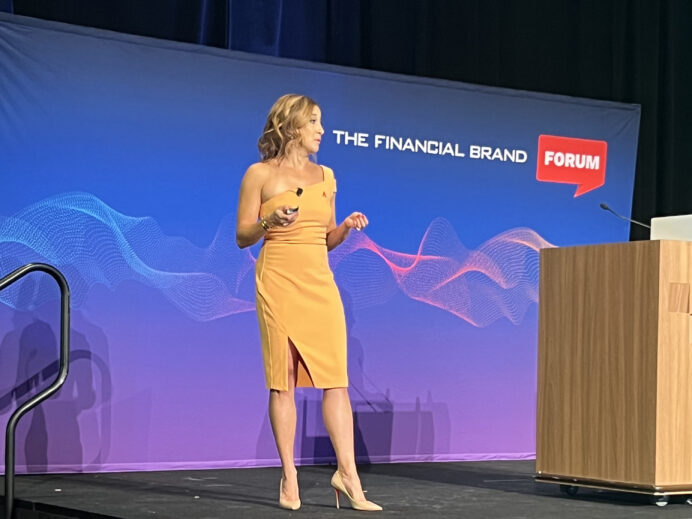Real world examples of imaginative bank branding for the physical environment
At a time when consumers report being less trusting of brands overall – as RepTrak found in their latest reputation report – connecting with consumers in an authentic way is essential. One way brands do that is through their physical spaces. Whether banking, retail or corporate, environments communicate what a brand values in sometimes surprising ways. That’s why it’s imperative to be thoughtful about these spaces. “For it not to be cringeworthy, we ended up not using too much branding,” says Jon Marshall, design director of the headquarters for IBM Watson IoT, in Fast Company. “Instead we tried to capture the spirit of the brand through the materials and through things like the lighting and the technology.”
For bank branches, that same kind of intentionality is being brought to life in communities across the country. Bank branding at the branch is far more than a retail space built for transactions, with logos and brand colors on the wall. It’s a more intuitive, immersive experience that communicates to consumers a brand’s values and promise without being overbranded and overtly commercial. It’s an ideal balance of form and function. According to the International Interior Design Association (IIDA), successful branded environments “carry the essence of the brand throughout multiple mediums,” which is increasingly important as people “consistently toggle between physical and digital environments.”
To see what financial institutions prioritize in their branch designs, we’ve rounded up the top 3 best practices for bank branding in the retail banking channel. These spaces use the branch to influence customers, prospects and staff and provide a platform for building banking relationships.
1) Use Branch Design as a Differentiator
With a unique architectural footprint, FNBC’s prototype branch is designed for an ideal customer journey inside this new branch environment. The subdivided floorplan was a deliberate way to maximize interactions – with a corridor dedicated to small business consultations and upfront retail serving customers. “The branch highlights a customer journey that maximizes the one-on-one relationship the bank is known for,” according to FNBC’s New Market, New Flagship case study. The design inside naturally unfolds. “The journey starts with a large invitational box at the entrance and into the lobby area, and then as the customer and staff build relationships inside, those spaces become a little bit cozier as interactions develop into deeper financial conversations.”
2) Nod to Brand in Inventive Ways
United Bank’s branch in the historic Georgetown neighborhood had to meet Washington DC’s notoriously stringent Historical Board standards – delivering a branch design that would be the right fit for the neighborhood while standing out at the same time. “With restricted signage and branding, the team had to get inventive with creative elements,” according to United Bank’s Expanding Influence for Relationship Banking case study. Those elements included illumination that gave a nod to the United brand without being overtly branded as United. “While the first-to-second floor window illumination provided an opportunity for a highly visible brand beacon, the storefront gave a unique entrance that spoke to the interior design language of the space.”
3) Lean Into Locality
Following any refresh or rebrand, banks and credit unions must update their physical spaces to reflect their new brand identity. But each space should still feel locally relevant and grounded in a sense of place. That’s what Park National did for each of their branches across the country, even as they unified under one brand umbrella. With 95 branch locations in Ohio, Kentucky, North Carolina, and South Carolina, Park’s value is that it remains a local community bank to customers in each of their markets. “Message deployment and digital signage ensured a consistent brand voice within the space,” according to Park National Bank’s Banking Built on Community case study. “A focal wall reestablished the new unified brand at the center of the customer journey.”
Create more authentic connections for your brand and marketing by partnering with Adrenaline, a brand experience company.
Adrenaline is an end-to-end brand experience company serving the financial industry. We move brands and businesses ahead by delivering on every aspect of their experience across digital and physical channels, from strategy through implementation. Our multi-disciplinary team works with leadership to advise on purpose, position, culture, and retail growth strategies. We create brands people love and engage audiences from employees to customers with story-led design and insights-driven marketing; and we design and build transformative brand experiences across branch networks, leading the construction and implementation of physical spaces that drive business advantage and make the brand experience real. Get in touch today.










